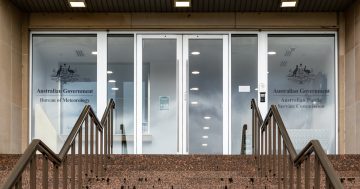
Canberra is a winner in reported increases in APS job numbers. Photo: Michelle Kroll.
Next month’s federal budget will be crunch time for public sector jobs, with significant inroads being made into agency resourcing and consultancy hire.
Labor’s first budget since coming to office, and just seven months since the Coalition delivered a federal budget in March, will be heavily focused on reducing wasteful expenditure.
Labor campaigned hard on a platform of slashing the consultancy spend while boosting actual jobs in the Australian Public Service.
But while everyone agrees that labour hire in the public sector is not going to disappear anytime soon, there will be noticeable changes announced in October’s budget.
Meanwhile, APS job numbers have lifted over the past year to 159,500, a growth of almost 6000 in the last financial year. More than 2000 of those job gains were in Canberra.
Election preparations played a significant role in the staffing levels, as did management of the pandemic. But employment increased across a number of agencies while noticeably shrinking in others.
The latest APS Employment Data report also reveals increasing public sector resignations.
In the current competitive job market, the APS has found it challenging to recruit and retain staff. Skills shortages are being reported across the service, making it all the more intriguing that numbers have actually risen across the sector.
The Australian Public Service Commission delivers a snapshot twice yearly of data concerning all APS employees from statistics provided by individual agencies.
“The reported size of the APS workforce is a headcount of all people employed at the time of the snapshot,” the report states.
But the data is purely a headcount of public service employees.
“Headcount is different to Average Staffing Level (ASL) data provided in the Federal Budget papers,” it states.
“The ASL counts staff for the time they work. For example, a full-time employee is counted as one ASL, while a part-time employee who works three full days per week contributes 0.6 of an ASL. The ASL averages staffing over an annual period. It is not a point-in-time calculation.”
The Australian Tax Office lost 900 mostly casual and temporary employees between 2021 and 2022, while Services Australia downsized its staffing levels by 1700.
Much of these job losses came from the Coalition’s drive to reduce public service numbers while also hiking up the spend on consultants and contract labour.
The Department of Foreign Affairs and Trade, however, had a boost in numbers, along with environmental and agricultural agencies, the Health Department, and the Australian Electoral Commission.
The snapshot also detected more staff movement than normal within the APS.
The Albanese Labor government will deliver its first federal budget on 25 October.




















